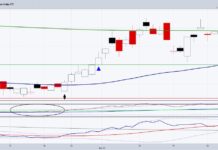 By Jeff Voudrie
By Jeff Voudrie
One of the most difficult aspects of investing for retirees is to go against the investing tide. We have all heard that we need to buy low and sell high, but few investors are able to consistently do it. Invariably, we give in to our emotions and end up investing at just the wrong time–we buy high and sell low.
One of my wealth management clients likes to trade stocks. Like many of my clients, he is a retired engineer. He has amassed what many would consider a small fortune during his working career because he worked hard, lived beneath his means and set aside as much as he could for retirement. He was even successful playing the trends of the company stock in his 401k.
He retired about 5 years ago and he thought he would be able to translate his 401k-management success into IRA-management success. His results have been mixed at best. There are three key mistakes that I feel have greatly hindered his efforts (and hinder many aspiring investors alike).
First, he reacts emotionally to market movements. On the surface, that may sound strange because engineers are NOT typically thought of as being emotional. But they are. The difference between engineers and others is that they/we ‘justify’ our action be applying fine-sounding logic to it. Those of us in the business know that it is just as easy to build a strong case for the markets going up as it is for the markets going down. If the markets experience a downtrend of even a few percent (or a couple of percent like today), he will sell a stock that was purchased just a few days earlier. He is a fundamental investor and it is hard to imagine the fundamentals changing significantly in two days–especially when there wasn’t any company specific news and it was reacting normally relative to the overall market. Invariably, the market turns around and starts heading back up. After it’s moved up several percent he starts to buy again. He is running with the herd instead of against it.
Second, he relies too much on fundamentals and doesn’t take into account even basic technical indicators. Fundamentals can help someone determine WHAT to buy, but technicals help you know WHEN to buy. Ignore the fundamentals at your own peril. And that’s why I am so impressed with the charts that Andy Nyquist regularly posts. Fundamental traders can use his charts (which are free!) to help them determine levels to buy and sell into.
Third, our retired engineer has failed to recognize that we are in a Bear market instead of a Bull market like the one he experienced most of his career. Bull markets are very forgiving and they make everyone look like a genius! When the overall markets are trending up, most individual stocks are as well. And any pull-backs are mild and short-lived. That is not the case in Bear markets. Bear markets will quickly expose flaws in one’s investing process. The strategies that work in a Bear market are often very different than those used in a Bull market. And furthermore, it’s the uptrends that are often transitory that are followed by harrowing drops.
I wish it were easy to avoid these three mistakes–but it takes time and hard work. Experience is the best (and costliest) teacher, but only if we are willing to learn her mistakes. As hard as it feels, you need to buy when the markets are plunging. Buy when the future seems bleakest. Then wait for all the other ‘chasers’ to run the stock up and use that as an opportunity to take profits. Make use of technical indicators like those provided on this and many other sites. And recognize that we are in a Bear market and that you need to exit a losing position sooner and take profits earlier.
Jeff Voudrie and Common Sense Advisors do not offer investment advice via this medium. Under no circumstance whatsoever do these postings, opinions, charts, or any other information represent a recommendation or personalized investment, tax, or financial planning advice.
—————————————————————-
Twitter: @JeffVoudrie @seeitmarket Facebook: See It Market Web: www.commonsenseadvisors.com
Any opinions expressed herein are solely those of the author and do not in any way represent the views or opinions of his employer or any other person or entity.








